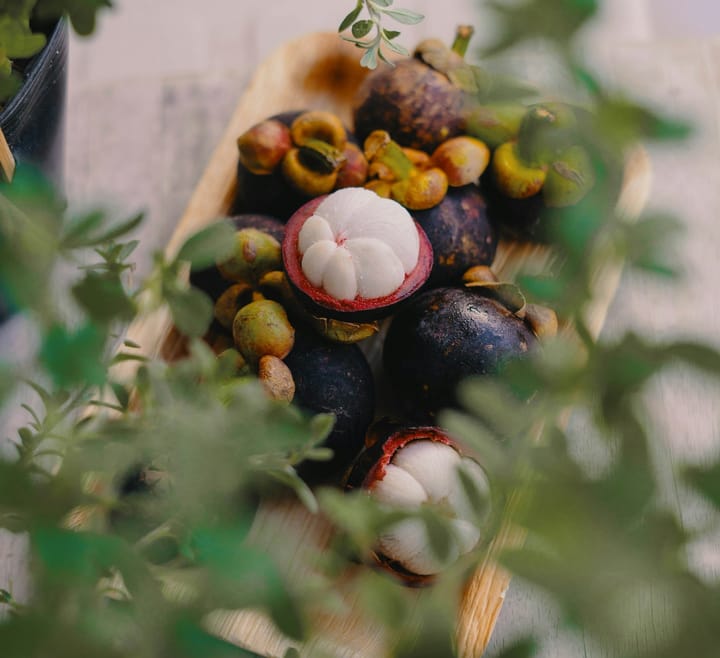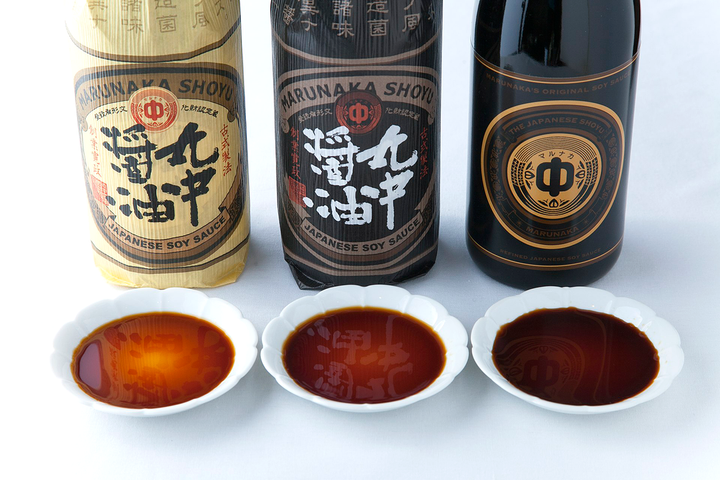Xanthones: Nature's Hidden Therapeutic Treasures in Food
Discover xanthones: nature's hidden healers in mangosteen and select plants. These unique compounds fight inflammation, neutralize free radicals, and combat harmful bacteria. Scientific studies reveal promising therapeutic potential while researchers work to unlock their full benefits.

Nestled within the vibrant colors of certain fruits, vegetables, and medicinal plants lies a family of compounds that scientists have increasingly recognized for their remarkable biological activities.
Xanthones, characterized by their distinctive tricyclic aromatic structure, represent one of nature's most intriguing yet underappreciated classes of bioactive molecules found in our food supply.
What Are Xanthones?
Xanthones belong to a class of polyphenolic compounds with a characteristic chemical structure consisting of a dibenzo-γ-pyrone framework.
This unique molecular architecture grants them exceptional biological properties that have captivated researchers worldwide.
These compounds naturally occur in select plant families, where they serve as part of the plant's defense mechanism against environmental stressors and pathogens.
The basic xanthone skeleton can be modified with various substituents, including hydroxyl, methoxyl, and prenyl groups, leading to over 1,300 different naturally occurring xanthones identified to date.
This structural diversity translates into a wide spectrum of biological activities, making xanthones particularly valuable from both nutritional and pharmacological perspectives.
A comprehensive review by Negi et al. (2013) in the Journal of Medicinal Plants Research documented the diverse structural variations of xanthones and their corresponding biological activities, highlighting how minor structural modifications can significantly alter their therapeutic properties.
Food Sources Rich in Xanthones
While xanthones aren't as ubiquitous in our diet as other polyphenols like flavonoids, several notable food sources contain significant amounts of these compounds:
Mangosteen (Garcinia mangostana) stands as the undisputed champion of dietary xanthones.
The purple mangosteen fruit, particularly its pericarp (rind), contains a rich array of xanthones, with α-mangostin, γ-mangostin, and garcinones being the most abundant. Traditional medicine systems across Southeast Asia have utilized mangosteen for centuries, attributing numerous health benefits to this "queen of fruits."
Research by Wittenauer et al. (2012) published in the Journal of Agricultural and Food Chemistry quantified the xanthone content in mangosteen pericarp, finding concentrations as high as 63 mg/g dry weight, with α-mangostin constituting approximately 80% of the total xanthones.
Certain species of citrus fruits contain xanthones in their peels and seeds. For instance, tangeretin and nobiletin, while technically polymethoxylated flavones, share structural similarities with xanthones and exhibit comparable biological activities.
A study by Zhang et al. (2018) in Food Chemistry identified and quantified several xanthone derivatives in citrus peels, noting their contribution to the overall antioxidant capacity of these food byproducts.
Several medicinal mushrooms, including species of Ganoderma (reishi) and Inonotus (chaga), contain xanthone derivatives that contribute to their immunomodulatory properties.
Research by Paterson (2006) published in Phytochemistry identified several xanthone compounds in Ganoderma species and correlated their presence with specific medicinal properties attributed to these fungi in traditional Asian medicine systems.
Specific herbs used in traditional medicine, such as St. John's wort (Hypericum perforatum) and gentian (Gentiana lutea), contain various xanthones that contribute to their therapeutic effects. While not consumed in large quantities as foods, these herbs are sometimes incorporated into teas and herbal preparations.
A comprehensive analysis by Crockett et al. (2011) in Phytochemistry Reviews documented over 50 different xanthones in Hypericum species, many with demonstrated biological activities in laboratory studies.
Health-Promoting Properties of Xanthones
The scientific exploration of xanthones has revealed an impressive array of potential health benefits, which might explain their historical use in traditional medicine systems:
Antioxidant Protection
Perhaps the most well-documented property of xanthones is their potent antioxidant activity.
These compounds efficiently neutralize reactive oxygen species (ROS) and free radicals, thereby protecting cellular components from oxidative damage.
Research suggests that certain xanthones, particularly those from mangosteen, demonstrate antioxidant capacities that surpass vitamin E in specific assay systems.
Jung et al. (2006) in the Journal of Agricultural and Food Chemistry conducted a comparative study of the antioxidant activities of various xanthones isolated from mangosteen, finding that γ-mangostin exhibited stronger antioxidant capacity than α-tocopherol (vitamin E) in lipid peroxidation assays.
The antioxidant mechanism of xanthones involves both direct scavenging of free radicals and the enhancement of endogenous antioxidant defense systems.
By upregulating enzymes such as superoxide dismutase, catalase, and glutathione peroxidase, xanthones provide multilayered protection against oxidative stress, which underlies various chronic conditions.
A study by Weecharangsan et al. (2006) published in Food and Chemical Toxicology demonstrated that mangosteen extract not only directly scavenged free radicals but also increased the expression and activity of antioxidant enzymes in liver cells, providing comprehensive protection against oxidative damage.
Anti-inflammatory Effects
Chronic inflammation represents a common denominator in numerous diseases, including cardiovascular disorders, neurodegenerative conditions, and cancer.
Xanthones exhibit remarkable anti-inflammatory properties through multiple mechanisms.
Studies have shown that xanthones can inhibit pro-inflammatory signaling pathways, including NF-κB and MAPK cascades, thereby suppressing the production of inflammatory mediators such as cytokines, prostaglandins, and nitric oxide.
This multi-target approach to inflammation modulation positions xanthones as potential natural alternatives or adjuncts to conventional anti-inflammatory therapies.
Research by Chen et al. (2008) in the Journal of Agricultural and Food Chemistry demonstrated that α-mangostin inhibited the production of prostaglandin E2 and expression of cyclooxygenase-2 (COX-2) in macrophages, exhibiting potency comparable to some non-steroidal anti-inflammatory drugs.
A clinical trial by Udani et al. (2009) published in Nutrition Journal found that a mangosteen juice blend consumed daily for 8 weeks significantly reduced levels of C-reactive protein (a marker of systemic inflammation) in overweight and obese subjects, suggesting translational potential for the anti-inflammatory effects observed in laboratory studies.
Antimicrobial Activity
In an era of increasing antimicrobial resistance, the search for novel compounds with antimicrobial properties has intensified. Xanthones have demonstrated significant activity against various pathogens, including bacteria, fungi, and viruses.
For instance, α-mangostin has shown efficacy against methicillin-resistant Staphylococcus aureus (MRSA) and vancomycin-resistant enterococci (VRE), highlighting the potential of xanthones in addressing antibiotic-resistant infections.
The antimicrobial mechanisms of xanthones typically involve disruption of bacterial cell membranes and inhibition of essential bacterial enzymes.
A landmark study by Sakagami et al. (2005) in the Journal of Pharmacological Sciences demonstrated that α-mangostin exhibited potent antibacterial activity against MRSA with minimum inhibitory concentrations ranging from 1.57-12.5 μg/mL, comparable to some conventional antibiotics.
Nguyen and Marquis (2011) in Canadian Journal of Microbiology elucidated the mechanism of action, showing that α-mangostin disrupts bacterial membrane integrity and inhibits membrane-associated enzymatic processes, explaining its broad-spectrum antimicrobial activity.
Cancer-Preventive Potential
Numerous preclinical studies have explored the anticancer properties of xanthones, revealing promising results across multiple cancer types.
These compounds appear to interfere with various stages of carcinogenesis, from initiation to progression and metastasis.
The anticancer mechanisms of xanthones include induction of apoptosis (programmed cell death), cell cycle arrest, inhibition of angiogenesis (formation of new blood vessels), and suppression of cancer cell migration and invasion.
While most evidence comes from cell culture and animal studies, these findings suggest that dietary xanthones might contribute to cancer prevention strategies.
Research by Matsumoto et al. (2005) in Cancer Letters demonstrated that α-mangostin induced apoptosis in human leukemia cells through activation of caspase cascades and mitochondrial dysfunction, without affecting normal peripheral blood mononuclear cells, suggesting selective toxicity toward cancer cells.
A study by Nabandith et al. (2004) in Cancer Letters showed that dietary administration of mangosteen pericarp extract significantly suppressed chemically-induced colon carcinogenesis in rats, reducing both the incidence and multiplicity of preneoplastic lesions.
Johnson et al. (2012) in BMC Complementary and Alternative Medicine reported that α-mangostin inhibited the growth of various prostate cancer cell lines and induced apoptosis through downregulation of microRNA-143, providing insight into the molecular mechanisms underlying its anticancer effects.
Conclusion
While xanthones may not be household names like vitamins C and E, these remarkable compounds represent an exciting frontier in nutritional science.
Their diverse biological activities, combined with their presence in culturally significant foods like mangosteen, position them as important contributors to the health benefits associated with plant-based diets.
As research continues to unravel the complexities of xanthone biochemistry and their effects on human health, these compounds may eventually take their rightful place alongside other celebrated phytonutrients in dietary recommendations and functional food development.
Until then, incorporating xanthone-rich foods as part of a varied, plant-based diet represents a prudent approach to potentially harnessing their benefits while awaiting more definitive clinical evidence.


